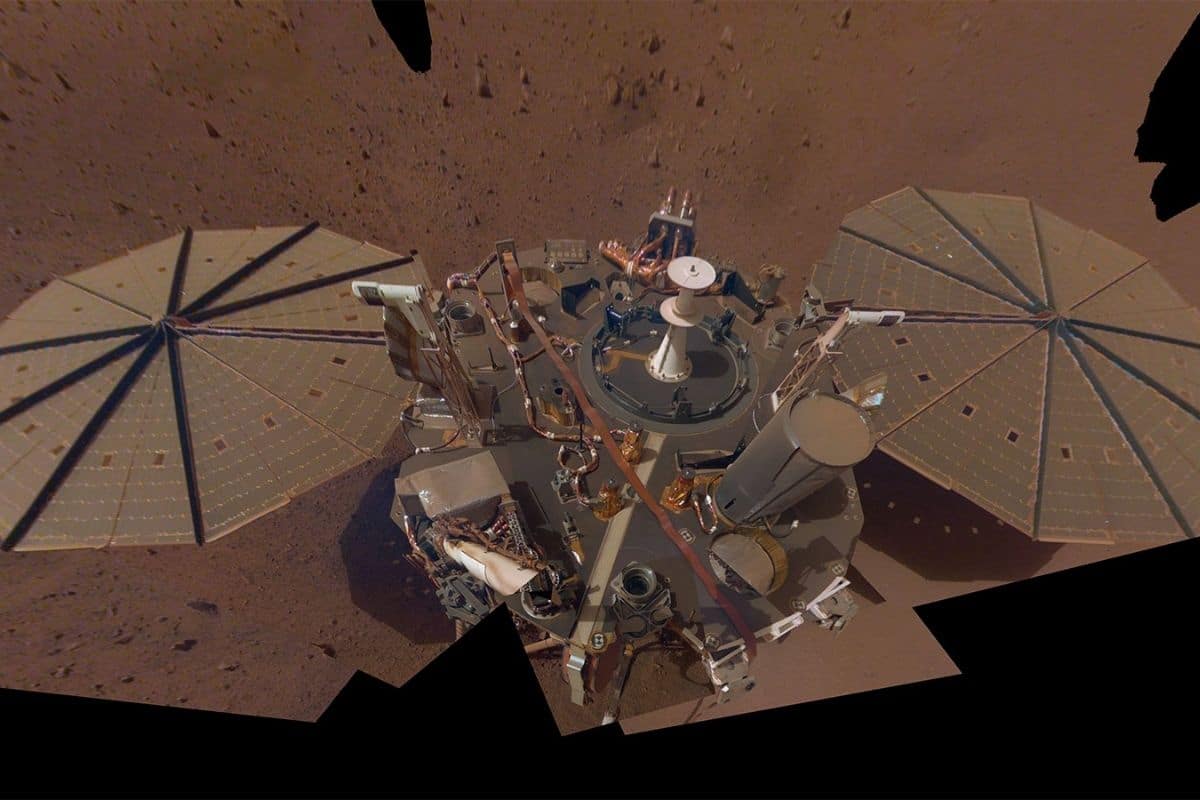

The lander’s health appears to be stable for the time being.
As you probably know, Mars is quite a dusty planet. Dust storms are therefore quite common on the planet. Dust particles are swept into the atmosphere, where they block out sunlight. To stave off a similar debacle as with Mars rover Opportunity, engineers have put Marslander Insight into “safe mode” until the dust storm hopefully eases off again next week.
Lockdown
It means Marslander Insight is in a kind of ‘lockdown’. Because in safe mode, the spacecraft suspends all non-essential functions. In this way, the lander, which is equipped with solar panels and now receives no sunlight due to the dust storm, saves a lot of energy. To further conserve battery power, there is also limited communication with the lander at this time.
dust storm
The dust storm could affect Insight’s solar panels in two ways. On the one hand, all the circulating dust ensures that less sunlight reaches the solar panels. It is a bit more difficult when a thick layer of dust accumulates on the solar panels. Whether that is currently the case remains to be seen.
spade
Incidentally, researchers have come up with something clever about this. Because Mars is such a dusty planet, landers and rovers are often shrouded in dust even without dust storms. The Insight team has equipped the lander with an ingenious scoop, mounted on its robotic arm. That way, the lander can “dust” itself and scoop the dust off itself. Several times in the past year, this has resulted in the lander generating more energy again. However, it is an energy-consuming act. And the lower the battery level, the less likely the scoop will still function.
Stable
At the moment, however, Insight seems to be weathering the dust storm well. The lander’s health appears to be stable for the time being. Although the level of the batteries is low, the researchers suspect that the dust storm will not completely deplete the batteries.
The current dust storm was first detected by Mars Color Imager (MARCI) camera aboard NASA’s Mars Reconnaissance Orbiter, which creates daily color maps of the entire planet. Those maps allow scientists to track dust storms. This then allows them to act early when deemed necessary.
The researchers are hopeful that the dust storm will not rage for much longer. Weather data seems to indicate that the strength of the regional storm is already waning. If that turns out to be the case, Insight will hopefully be able to wake up from safe mode next week and resume its tasks.
Insight landed on the red planet in late 2018, with the goal of studying the planet’s internal structure, including its crust, mantle and core. Meanwhile, the lander has already detected multiple Marsquakes, helping scientists understand more and more about these quakes. For example, it appears that marsquakes on the red planet occur several times a day. In addition to a seismometer, the Mars lander Insight also has a magnetometer, which can be used to pick up magnetic signals. And researchers are also making an interesting discovery with this instrument. It turns out that the magnetic field of Mars is ten times stronger than expected. Meanwhile, researchers are also trying to learn more about the interior of Mars with the HP3 (Heat Flow and Physical Properties Package). Also known as ‘the mole’, this instrument is designed to drill up to five meters deep into Mars and measure the temperature inside the red planet. In this way, the hammer drill can provide more insight into how much heat is emitted from Mars itself. Unfortunately, those ambitious plans have died a quiet death. The drill proved time and again to refuse service. After many unsuccessful attempts, NASA finally gave up: drilling on Mars is too difficult.
Source material:
“NASA’s InSight Enters Safe Mode During Regional Mars Dust Storm” – NASA
Image at the top of this article: NASA/JPL-Caltech